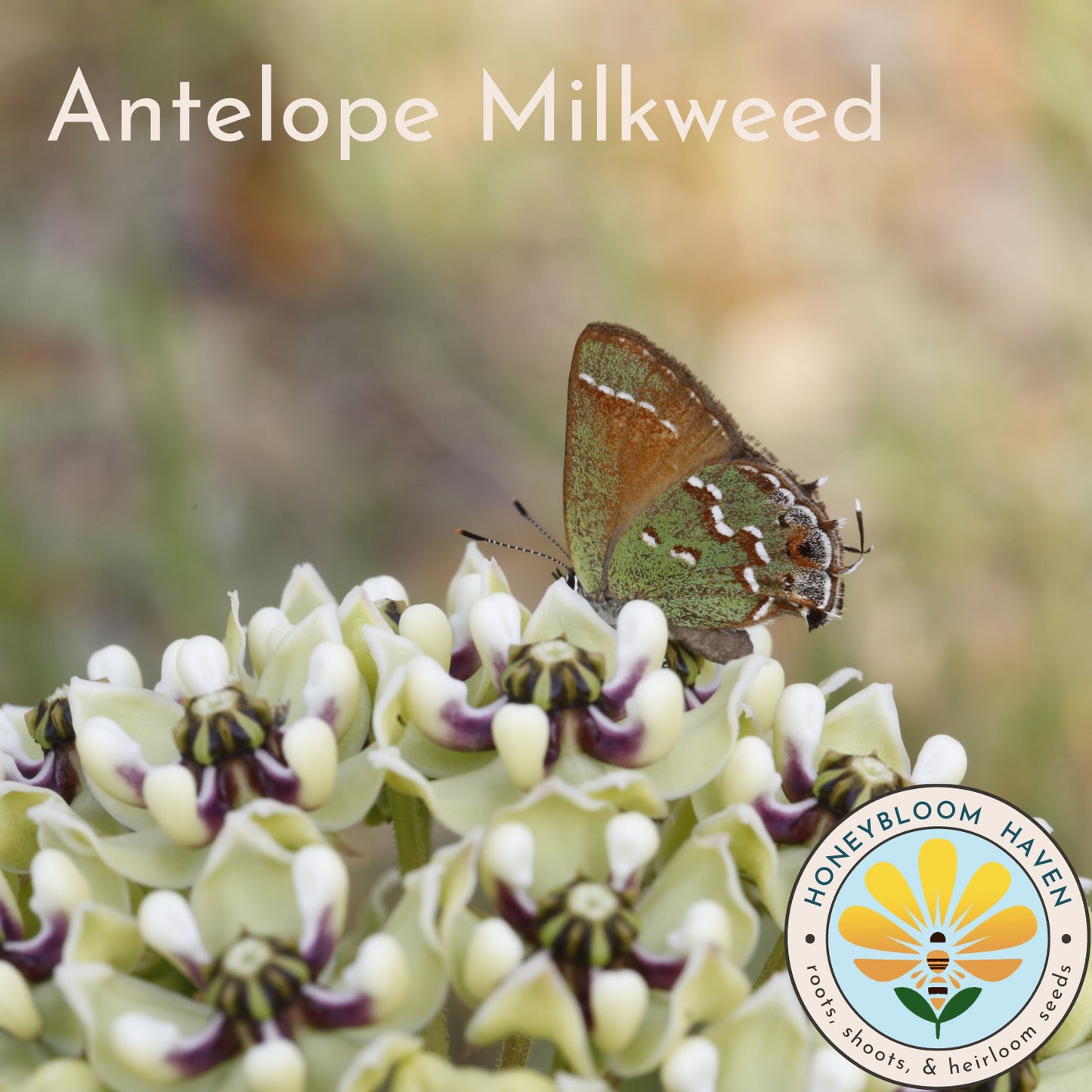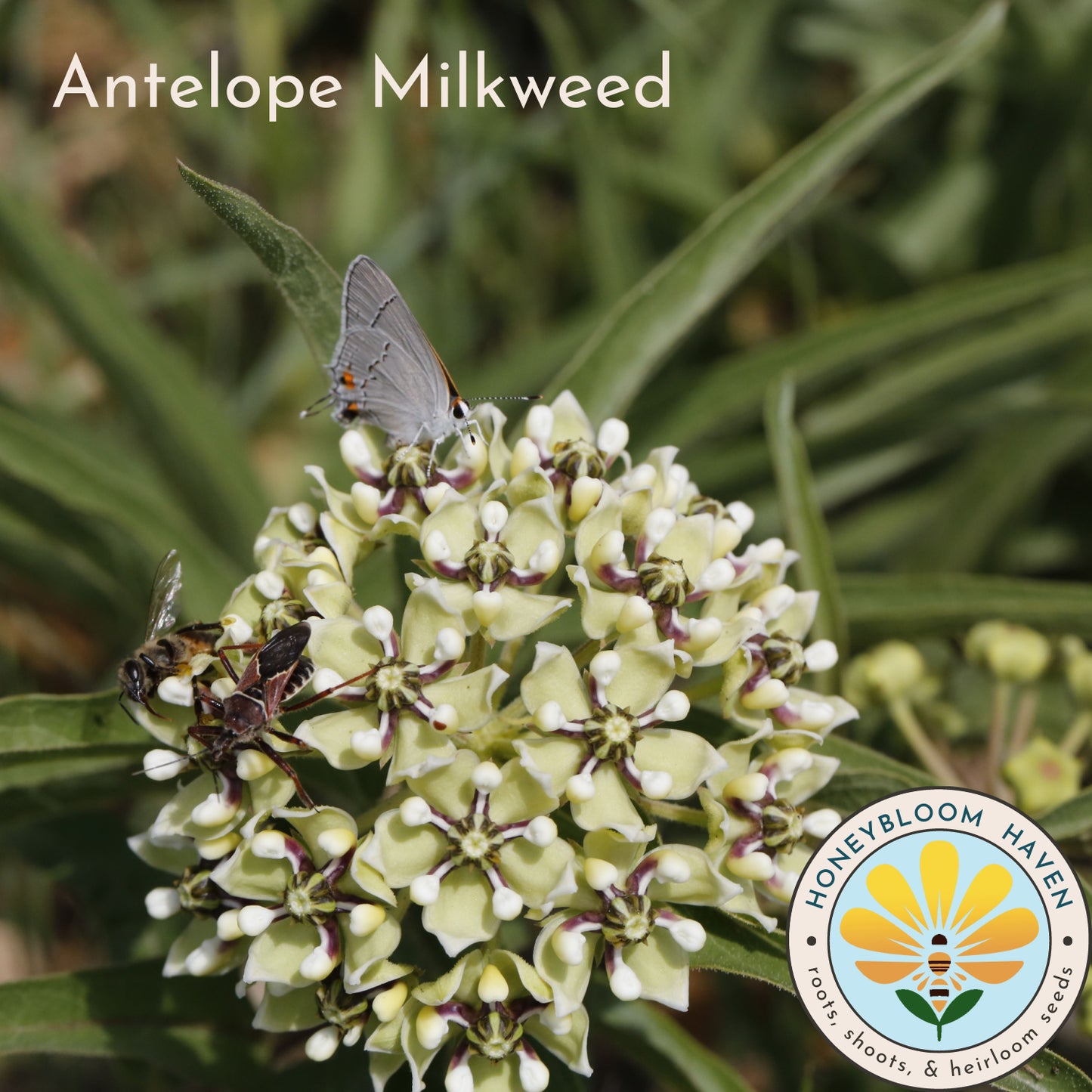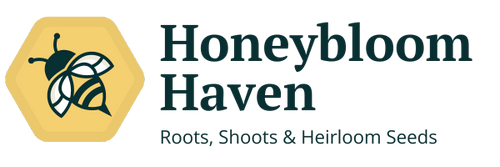Honeybloom Haven
Milkweed, Antelope Horns
Milkweed, Antelope Horns
Couldn't load pickup availability
Asclepias speciosa
Type:
The Antelope Horns Milkweed is a fascinating native perennial, showcasing distinctive greenish-yellow flowers with curved horn-like seed pods. Its gray-green foliage creates a lovely contrast to the blooms. This low-maintenance plant is drought-tolerant and thrives in sunny locations. Attracting pollinators like monarch butterflies, this milkweed variety is perfect for creating a wildlife-friendly garden.
- 6-12 Hours of Sun
- Sprouts in 14-21 Days
- Ideal Temperature: 65-70 degrees F
- Seed Depth: 1/4-1/2"
- Plant Spacing: 12-24 inches
- Plant Height: 5 feet
- Frost Hardy: Yes
Planting Tips: Cold straify. Can be started indoors 6-8 weeks ahead of last frost, or direct sown outdoors.
Growing Tips: Thrives in full sun and summer heat. Remove spent flowers to prolong blooming period.
Caution: The milky sap is poisonous if ingested in large quantities; contact with the skin may cause dermatitis in sensitive individuals.
Minimum Seeds per Packet: 15
General Care Information
General Care Information
Lifecycle: Perennial
Frost Hardy: Yes
Bloom Color(s):
Light: Full Sun (6+ hours)
Water Needs: Moderate (~1 inch per week)
Fertilizer:
Other Info:
Planting Tips
Planting Tips
Ideal Germination Temp: 65-70 degrees F
Seed Planting Depth: 1/4-1/2"
Days to Sprouting: 14-21 Days
Plant Spacing: 12-24 inches
Plant Height: 5 feet
Other Info:
Growing & Harvesting Tips
Growing & Harvesting Tips
- Vigorous, long vines can reach 10-15 feet and need support.
- Harvest frequently to keep plants productive.
- Mulch soil to retain moisture & keep roots cool
- When vines reach the top of the support, pinch the vines to force plants into heavier bean pod production
- Harvest in the morning when sugar content is highest, if eating fresh
Diseases & Pests
Diseases & Pests
Diseases:
Pests:


You may also enjoy adding
-
 Sold out
Sold outButterfly Pea, White
Regular price $3.29 USDRegular priceUnit price per -
 Sold out
Sold outButterfly Pea, Double Lavender
Regular price $3.29 USDRegular priceUnit price per -
 Sold out
Sold outButterfly Pea, Double Blue
Regular price $3.29 USDRegular priceUnit price per -
 Sold out
Sold outButterfly Pea, Blue White
Regular price $3.29 USDRegular priceUnit price per






